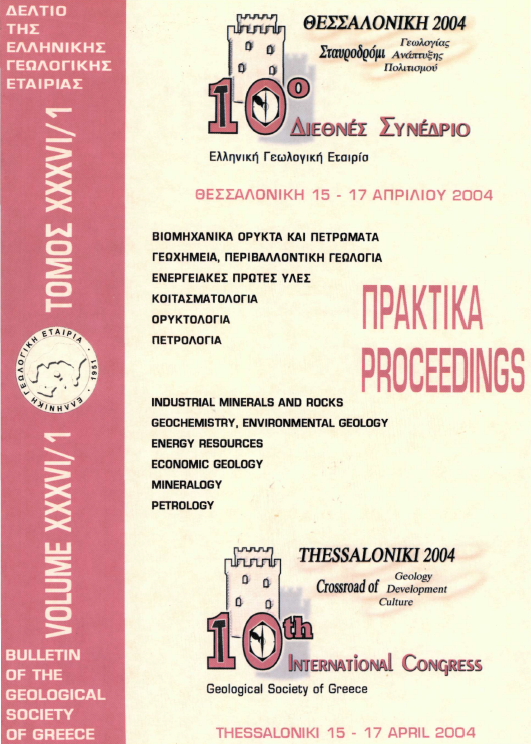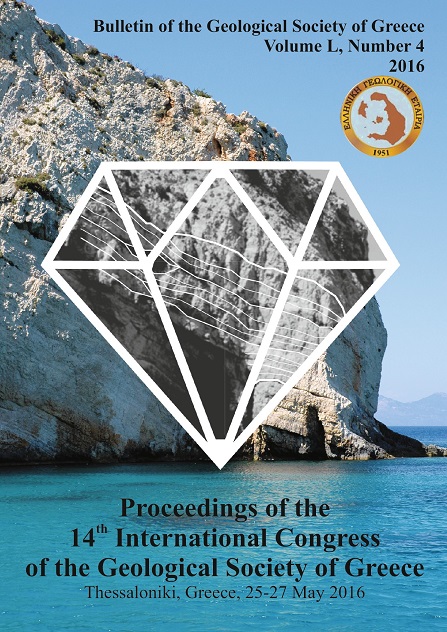THE USE OF DIATOMACEOUS ROCKS OF GREEK ORIGIN AS ABSORBENTS OF OLIVE-OIL WASTERS
Περίληψη
Diatomite is a multifunctional industrial mineral, having commercial interest in the food/agricultural and the construction sectors and also in environmental applications. Certain diatomite deposits worldwide are used as absorbents and filtering media in industrial scale. In Greece, several types of diatomaceous deposits (calcareous, clayey or amorphous phases-rich) occur in marine or lacustrine Tertiary basins. Bulk samples originated from western Macedonia, Thessaly and the islands of Samos and Milos were characterized, tested and compared concerning their absorption ability against olive mill wastes. The results of the current research show insignificant variations in the absorption ability of the tested Greek diatomites exhibiting equal or better behavior than some of the commercially used absorbents, either diatomaceous, or clayey. Hence, the Greek raw materials could find applications in the prevention of seashores and river banks pollution from the acidic olive-oil wastes.
Λεπτομέρειες άρθρου
- Πώς να δημιουργήσετε Αναφορές
-
Stamatakis, M., & Stamatakis, G. (2010). THE USE OF DIATOMACEOUS ROCKS OF GREEK ORIGIN AS ABSORBENTS OF OLIVE-OIL WASTERS. Δελτίο της Ελληνικής Γεωλογικής Εταιρείας, 43(5), 2739–2751. https://doi.org/10.12681/bgsg.11680
- Ενότητα
- Πετρολογία και Ορυκτολογία

Αυτή η εργασία είναι αδειοδοτημένη υπό το CC Αναφορά Δημιουργού – Μη Εμπορική Χρήση 4.0.
Οι συγγραφείς θα πρέπει να είναι σύμφωνοι με τα παρακάτω: Οι συγγραφείς των άρθρων που δημοσιεύονται στο περιοδικό διατηρούν τα δικαιώματα πνευματικής ιδιοκτησίας επί των άρθρων τους, δίνοντας στο περιοδικό το δικαίωμα της πρώτης δημοσίευσης. Άρθρα που δημοσιεύονται στο περιοδικό διατίθενται με άδεια Creative Commons 4.0 Non Commercial και σύμφωνα με την οποία μπορούν να χρησιμοποιούνται ελεύθερα, με αναφορά στο/στη συγγραφέα και στην πρώτη δημοσίευση για μη κερδοσκοπικούς σκοπούς. Οι συγγραφείς μπορούν να: Μοιραστούν — αντιγράψουν και αναδιανέμουν το υλικό με κάθε μέσο και τρόπο, Προσαρμόσουν — αναμείξουν, τροποποιήσουν και δημιουργήσουν πάνω στο υλικό.






